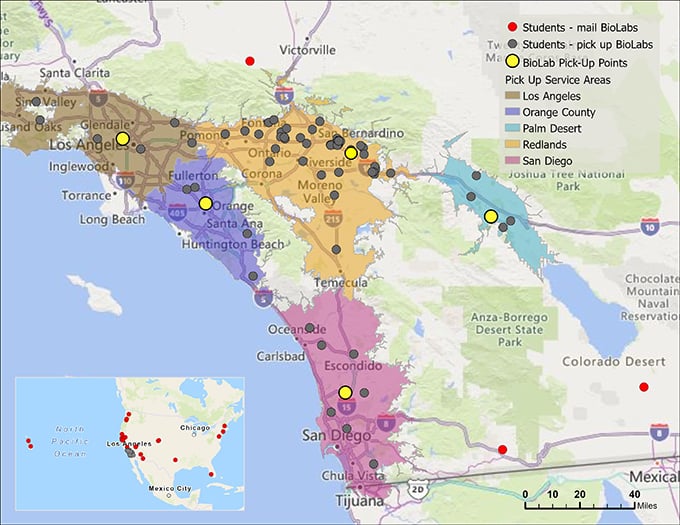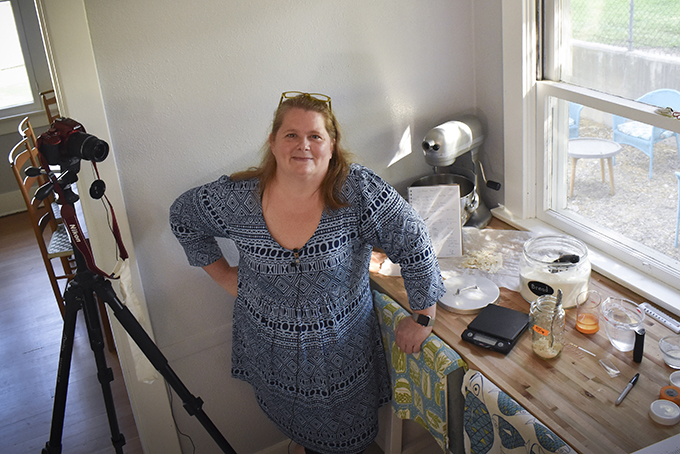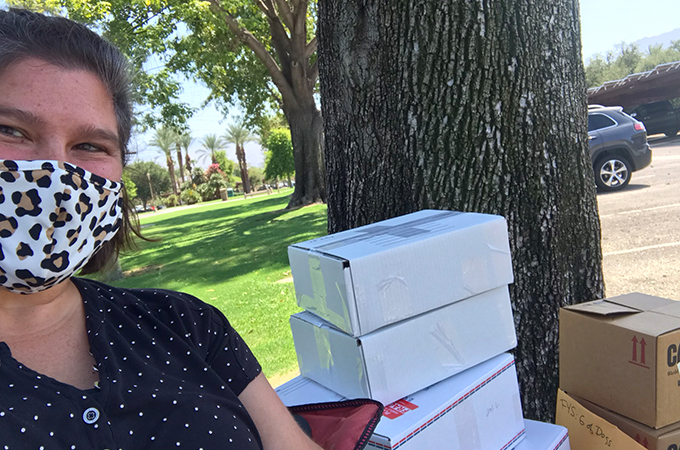Science courses present a unique challenge for online teaching, but University of Redlands professors have used their creativity to make lab work happen for more than 150 students in six different courses.
“Although some labs were converted to virtual simulations, in many cases we wanted students to do ‘real science’ hands-on,” says Biology Professor Lisa Olson. With her colleagues and the staff in the stockroom, Olson assembled science “care packages” with supplies including Petri plates, seeds to grow at home with special light bulbs, sterile tools to culture microorganisms, chemicals, and gloves.
Lab experiments were recreated and adapted to be safely conducted at home. “In some cases, that means students are using blenders, microwaves, measuring cups and cell phone cameras as substitutes for scientific equipment,” Olson says. “But they can set up real experiments and collect actual data. We are very happy we can make that happen."
Cross-disciplinary collaboration
Once the “care packages” were assembled, professors leveraged a cross-disciplinary collaboration to deliver them. Olson reached out for Spatial Studies expertise at Redlands in the form of Lisa Benvenuti, spatial resource manager in the Center for Spatial Studies.

“We sent Lisa the addresses of the students, and she calculated five locations within a 30-minute drive for most students to pick up in Southern California,” Olson says.
Professors took turns at the drop-off locations, using COVID-19 safety protocols, to distribute the packages. Students who couldn’t pick up their packages received them by mail.
“The students seem to enjoy getting to do something hands-on, not virtual,” Olson says. In biology courses, students have been culturing microbes on Petri plates then testing their nutritional requirements; analyzing the genetics of plant seedlings for color and stem length; and extracting DNA from fruit from the grocery store. Later in the semester, they will analyze corn kernels for inheritance and quantitating the enzyme reaction that causes apples to brown when exposed to air.
Teaming up
In her course Mother Earth Chemistry, Professor Candy Glendening has students working through their labs independently, then sharing data in small groups on Microsoft Teams: “They can see how changes in the variables cause the data to vary—such as when they make mozzarella cheese and use different kinds of milk.”

Some of her labs include yeast fermentation, yogurt culturing, sourdough culturing, preserving fruit, and dyeing with natural plant materials.
“They are doing fantastic,” she says of her students. “I am so happy with their attention to detail and recording of their protocols, and they did more graphing of their combined data than I’d hoped for.”
Learn more about biology, chemistry, and other undergraduate areas of study in the U of R College of Arts and Sciences.






